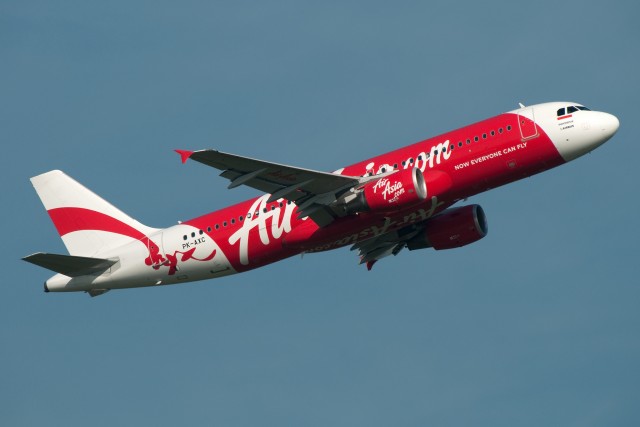
The AirAsia Airbus A320 in question (PK-AXC) seen here in 2010. On December 28, 2014, this plane would be used on AirAsia Flight QZ8501 that has now been confirmed crashed – Photo: Bruno Geiger | Flickr CC
On December 28th, at 6:12 am local time, Indonesia AirAsia flight QZ8501, traveling from Surabaya, Indonesia to Singapore, went missing over the Java Sea. On Tuesday the 30th, wreckage of the plane was discovered in the general area where the last known location was, confirming that QZ8501 had crashed.
The aircraft involved was an Airbus A320-216 registered PK-AXC. Contact was lost with the flight as it was climbing to a higher altitude to avoid weather, which is a standard operating procedure.
There were 155 passengers and seven crew. The cause of crash will likely not be known for quite some time still.
This story will be updated as new information is received. Last updated 12/30/2014 6:40am PST.
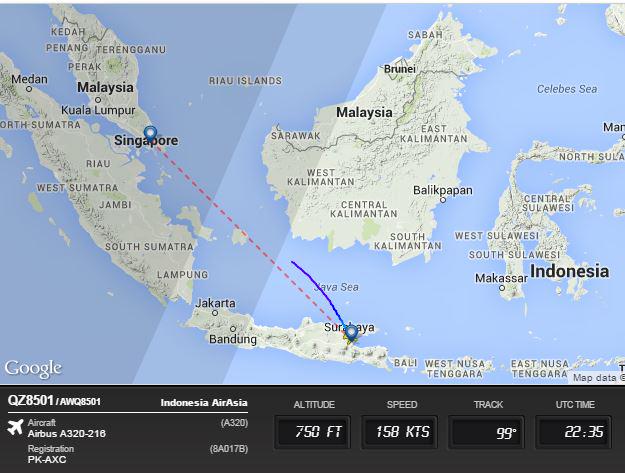
Route map of QZ8501 showing it disappearing somewhere over the Java Sea – via Jason Rabinowitz on FlightRadar24
AirAsia Flight QZ8501 Updates
12/30 7:20am PST: The worst has been confirmed, flight AirAsia flight QZ8501 crashed into the Java Sea and officials have found wreckage and the remains of passengers on board. They discovered the wreckage about 100nm southwest of Pangkalan Bun in Borneo. Rescuers will continue to search for bodies, wreckage, and of course the flight data recorder (aka black boxes). The black boxes and parts of the fuselage have technologies so rescuers can more easily discover them.
According to aviation journalist Jason Rabinowitz, the fuselage has Emergency Locator Transmitters (ELTs), which are used to find debris above water and Underwater Locator Beacons (ULBs), which are located with the boxes, are used when they are underwater. “Every commercial aircraft has multiple location technologies on board,” Rabinowitz explained to AirlineReporter. “ELTs are located in several spots on the aircraft. These transmitters emit a signal that can be received by other aircraft, boats, or even satellites. However, they do not work once submerged in water.”
“Attached to each black box is an ULB. These beacons are activated once in water and emit a ping over a very specific radio frequency. The ULB has a very short range, and must be picked up by boats passing over the area. The battery typically lasts for around 30 days.”
AirAsia has released another statement:
SURABAYA, 30TH DECEMBER 2014 ’“ AirAsia Indonesia regrets to inform that The National Search and Rescue Agency Republic of Indonesia (BASARNAS) today confirmed that the debris found earlier today is indeed from QZ8501, the flight that had lost contact with air traffic control on the morning of 28th.
The debris of the aircraft was found in the Karimata Strait around 110 nautical miles south west from Pangkalan Bun. The aircraft was an Airbus A320-200 with the registration number PK-AXC. There were 155 passengers on board, with 137 adults, 17 children and 1 infant. Also on board were 2 pilots, 4 cabin crews and one engineer.
At the present time, search and rescue operations are still in progress and further investigation of the debris found at the location is still underway. AirAsia Indonesia employees have been sent to the site and will be fully cooperating with BASARNAS, National Transportation Safety Committee (NTSC), and relevant authorities on the investigation.
Sunu Widyatmoko, Chief Executive Officer of AirAsia Indonesia said: ’œWe are sorry to be here today under these tragic circumstances. We would like to extend our sincere sympathies to the family and friends of those on board QZ8501. Our sympathies also go out to the families of our dear colleagues.’
Tony Fernandes, Group Chief Executive Officer of AirAsia added: ’œI am absolutely devastated. This is a very difficult moment for all of us at AirAsia as we await further developments of the search and rescue operations but our first priority now is the wellbeing of the family members of those onboard QZ8501.’
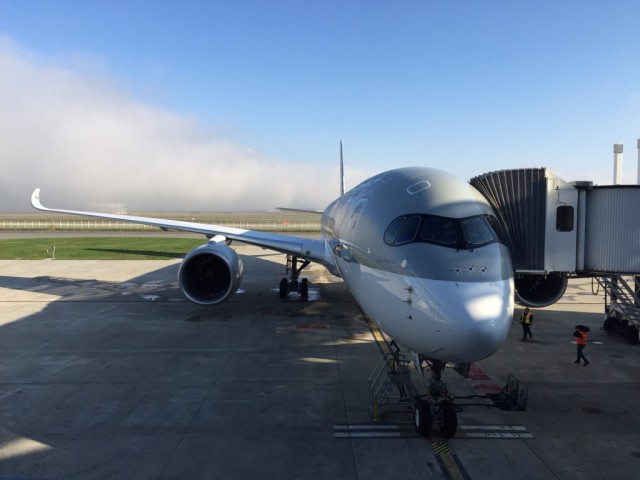
Qatar’s first Airbus A350 at Toulouse, ready to fly to Doha – Photo: Chris Sloan | AirwaysNews
This story was written by Chris Sloan and originally published on AirwaysNews.
At 9:28 PM LT on Tuesday, December 23, Qatar’s first A350 XWB landed in Doha’“under the cover of darkness’“with approximately 70 Qatar employees, VIP’s and media on-board the delivery flight from Toulouse, France.
On Monday, Airbus handed over the first A350 XWB to launch customer Qatar Airways, and shortly after taking delivery of the aircraft, several executives and more than a hundred members of the media flew on a short demonstration flight over the Mediterranean.
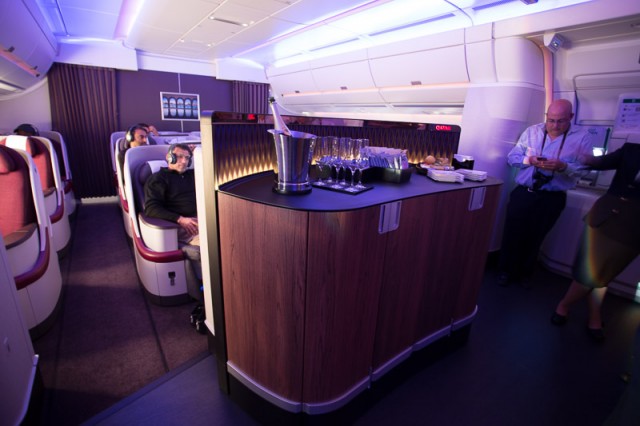
The Qatar Airways’ Airbus A350 bar – Photo: Jeremy Dwyer-Lindgren | JDL Multimedia
The delivery flight to Doha would be operated as a normal commercial scheduled flight, but just with fewer people then typical. Business Class was full while approximately ten passengers’“who were all employees of Qatar’“would have the two economy cabins to themselves.
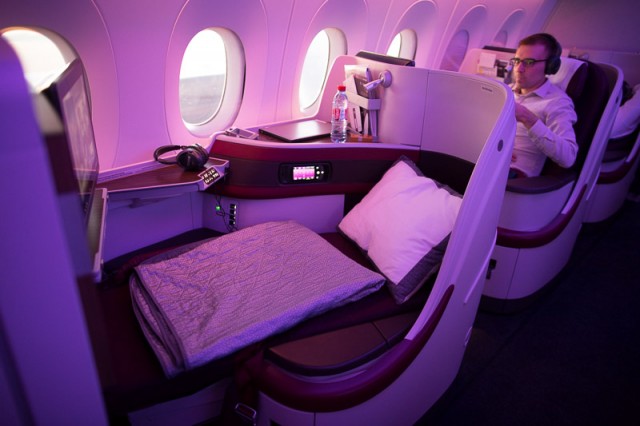
A Business Class seat on the Airbus A350 – Photo: Jeremy Dwyer-Lindgren | JDL Multimedia
As much as I was anticipating experiencing the Airbus A350 XWB in a true commercial flight, I was equally as curious in putting Qatar’s renowned SkyTrax 5-star rated Business Class, marketed and self-proclaimed as ’œWorld’s Best Business Class,’ to the test. Burning questions include: Would it live up to all the hype and marketing expectations? Is it truly a First Class product at a Business Class price? Is the Airbus A350XWB cabin truly an ’œeXtra Wide Body’ experience in the same league as its 787 competitor from Everett?
Continue reading Flight Review: Taking Qatar Airways’ Airbus A350 Delivery Flight to Doha on AirwaysNews.com
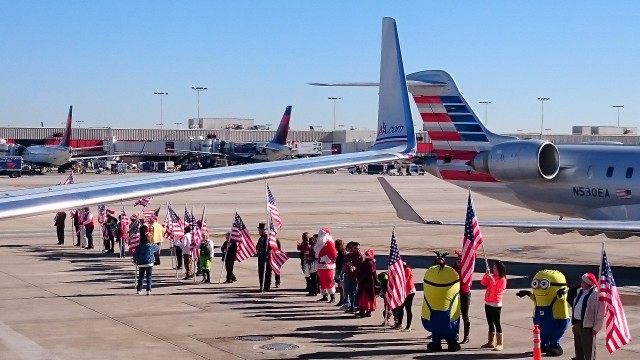
The Snowball Express folks lined up on the tarmac in Atlanta with some familiar faces – Photo: Jason Rabinowitz
The sun had yet to rise over the control tower at New York’s JFK Airport on the cold December morning, but the party at Terminal 8 was already well underway. This was no ordinary day at JFK. For the ninth consecutive year, American Airlines was beginning a long day of charter flights, celebration, and remembrance with the Snowball Express program.
Since 2006, Snowball Express has partnered with American Airlines to provide a weekend of fun for families that have lost a family member in active military duty since September 11, 2001. American Airlines provides the flights from around the country free of charge for all families, and the scope of the operation is absolutely massive.
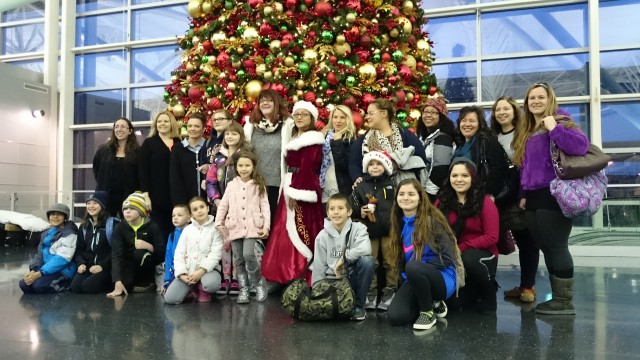
The New York passengers of Snowball Express pre-flight at the Christmas tree in American’s terminal – Photo: Jason Rabinowitz
Throughout the day, flights operate from their origins and converge on Dallas while picking up additional passengers at 62 cities. This year, American utilized ten aircraft to support Snowball Express flights, ranging from regional jets to Boeing 757s and Airbus A321s. In total, over 150 American Airlines pilots and flight attendants donated their time to the charter flights. The Snowball Express operation is larger than that of some entire airlines.
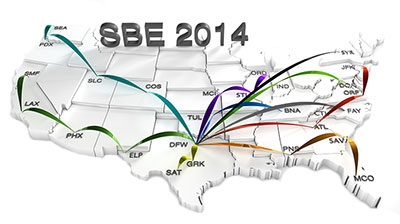
The Snowball flight out of New York, operated by a Boeing 737-800, made two stops along the way to Dallas – Norfolk, Virginia, and Atlanta, Georgia. Before departing JFK, the day kicked off with an upbeat party adjacent to the Admirals Club, complete with DJ, photo booth, and emotional support dogs dressed up like Santa. Before long, it was time to depart for Norfolk, but not before a touching send off from the NYPD, FDNY, Port Authority Police Department, TSA, and JFK employees. Once on board, however, the real fun began.
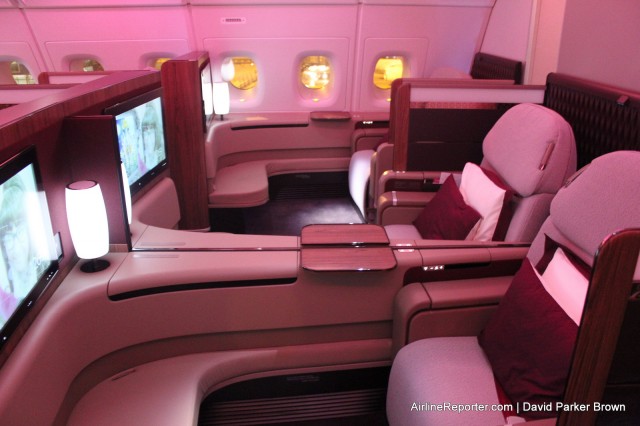
Qatar First Class product on the A380. For our flight, there were no First Class passengers.
The more that I fly the Airbus A380, the more I like the aircraft — as a passenger, but I am not so sure as an AvGeek. It is so smooth during take-off and landing, one might not even realize that they happened. Turbulence is mostly absorbed by the jumbo jet, making the flight smooth. The windows and walls are so thick, the aircraft stays quiet and passengers are removed from the flying experience.
As an AvGeek, these are some of the reasons why I am not a huge fan of the A380. I want to feel the take-off, I enjoy a little turbulence, and I want to stay connected to the entire flight experience. But this doesn’t mean I cannot enjoy an A380 flight, especially when it is on a Qatar Airways aircraft with an impressive on-board product.
Recently, I was invited to participate in the inaugural Qatar A380 flight from Bangkok to Doha, and who am I to refuse? Overall, it was an amazing flight, but I wished it was a bit longer — it was only about six hours.
One of the biggest disappointments I had regarding the flight was not being able to get an exterior shot of the A380. And believe it or not, that was partially due to both Bangkok and Doha airports being designed where photos are hard to get, and also because of the King of Thailand.

Qatar Airways’ First A350 (MSN006) at the Airbus Delivery Center – Photo: Bernie Leighton | AirlineReporter
Qatar Airways, to much fanfare, took delivery today of the first commercial A350-900. Not only is this the first serial production A350 to be delivered to a customer, it is also the first of 80 A350s headed for Qatar Airways. Qatar has 36 additional -900s on order as well as 43 -1000s.
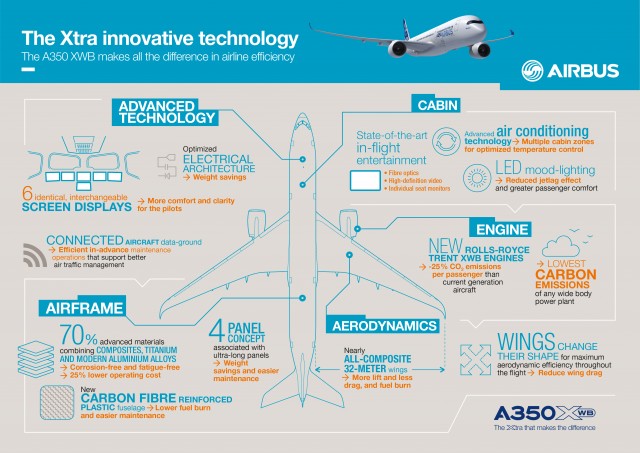
An easy way to understand the technology in the A350 – Image: Airbus
The A350 itself represents a technological leap for Airbus, as it is their first aircraft to be over 50% composite materials; 53%, technically – including the longest manufactured single pieces of carbon fiber that make up the wing assembly. The remainder of the aircraft is made up of modern metallurgical feats that manifest themselves as lighter titanium and aluminum alloys.
BONUS: OMG YES! Photos & Video of Five Airbus A350s Flying in Formation
If that wasn’t enough to impress you, the A350 is the first aircraft certified by the EASA to operate ETOPS 370 missions prior to entry-into-service (EIS). ETOPS 370 is the next phase of Extended-range Twin Operations, allowing an aircraft to be certified to fly on one engine for more than six hours. This opens up a whole host of new destinations for twin-engine aircraft, as well as adds efficiencies to existing air routes as airlines will no longer have to “hug” strategic alternate airports as tightly.











